Port of registry Valletta, Malta Length 382 m | Yard number 3401 Launched 26 January 2013 | |
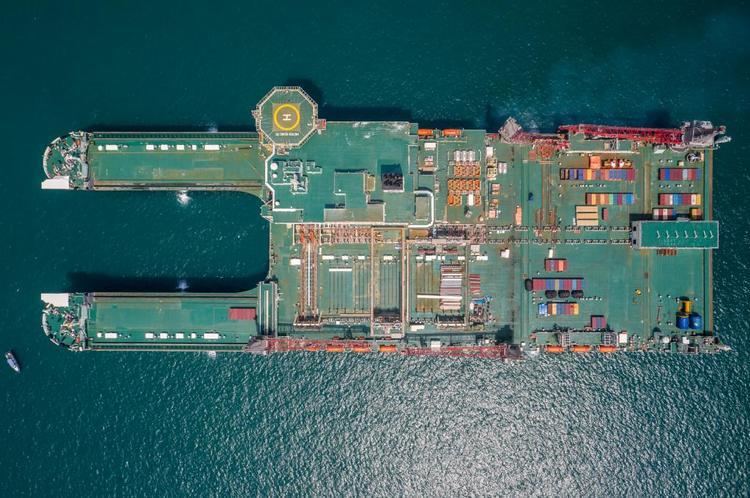 | ||
Name Pioneering Spirit (formerly Pieter Schelte) Owner Société d’Exploitation du Pioneering Spirit Operator Allseas Engineering B.V. Identification Call sign 9HA4112
IMO number 9593505 Builder Daewoo Shipbuilding & Marine Engineering | ||
Pioneering Spirit (previously named Pieter Schelte) is the world's largest construction vessel, designed for the single-lift installation and removal of large oil and gas platforms and the installation of record-weight pipelines.
Contents

Designed entirely in-house by Swiss-based Allseas Group, the 382 m long, 124 m wide vessel was built in South Korea by Daewoo Shipbuilding & Marine Engineering (2011–14) at a cost of €2.6 billion (US$3 billion), and commenced offshore operations in August 2016.
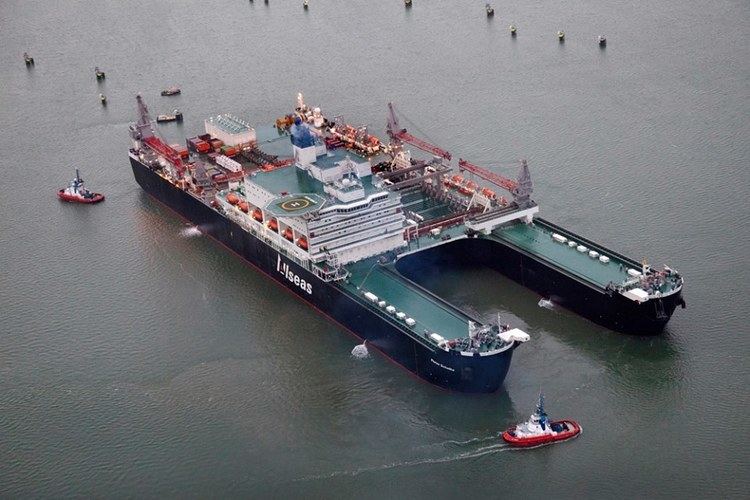
Pioneering Spirit set a world offshore lifting record of 13,500 t with her first commercial lift, removal of the Repsol-operated Yme mobile offshore production unit (MOPU) in the Norwegian North Sea, on August 22, 2016.
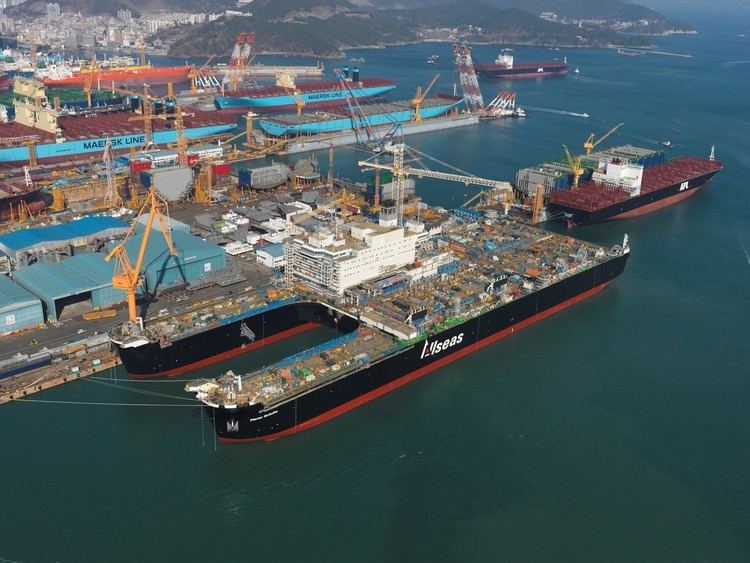
Allseas has committed to building an even larger version of the same design, "Amazing Grace", which is scheduled to be delivered in 2022.
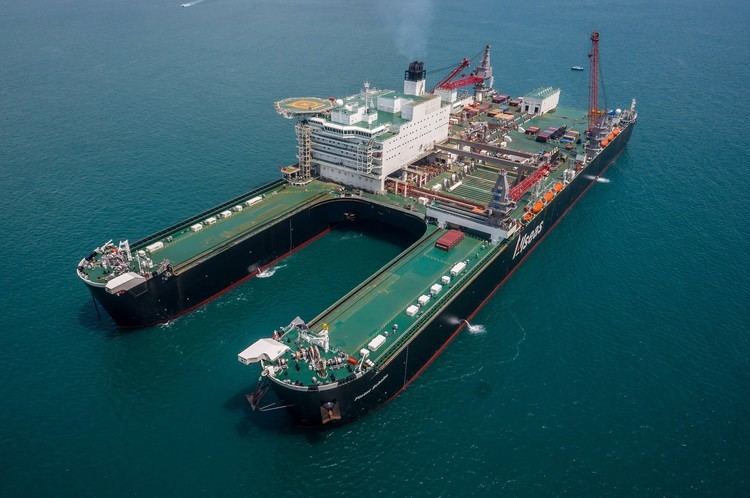
Development history

Allseas first declared its intention to build a vessel capable of lifting entire platforms in 1987. The initial idea was based on two rigidly-connected, self-propelled supertankers, with a large slot at the bows to install platform topsides in one piece. Early designs featured a flotation and ballasting system and active motion compensation system to facilitate a controlled transfer of topsides weight from the vessel to a platform substructure. Allseas developed the original idea to include steel jacket installation, jackets and topsides removal and rigid pipelay capabilities.
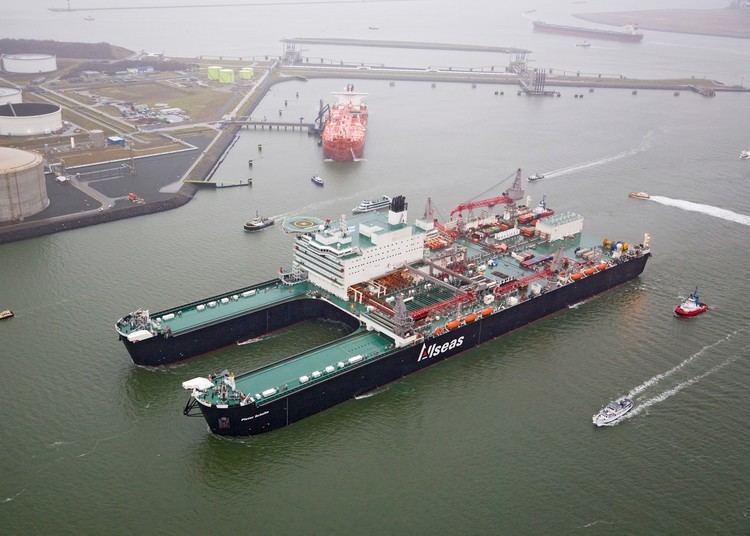
In 2004 the emphasis switched from the conversion of two existing tankers to a newbuild hull. The decision was prompted by a lack of suitable vessels to convert, the lower costs associated with a new-build and the need to house sophisticated equipment – such as a dynamic commissioning system – in the hull. Although the design still featured a U-shaped slot, the word "catamaran" no longer applied.
Twenty years after the original idea was conceived, in 2007 Allseas announced plans to build "Pieter Schelte", a twin-hulled platform installation / decommissioning and pipelay vessel. Named after the offshore pioneer Pieter Schelte, father of the Allseas’ owner and founder Edward Heerema, the vessel design had a lifting system at its bow for lifting platform topsides up to 48,000 t, a lifting system at its stern for lifting steel jackets up to 25,000 t and pipelay equipment to handle pipe diameters ranging from 6 to 68 inches at water depths exceeding 4000 m (13,100 ft.).
Orders for machinery, including generators and thrusters, were placed in 2007 and for the high-tensile steel for the lifting systems in 2008. However, Allseas was forced to postpone the building schedule as the global financial crisis weakens funding and delays award of the hull construction contract. Detail Engineering was completed by Finnish engineering company Deltamarin in 2009. In June 2010 the main construction contract was signed with South Korean shipyard Daewoo Shipbuilding & Marine Engineering Co Ltd.
Midway through the build, Allseas decided to widen the vessel by 6.75 m in order to increase the clearance between the bows and the legs of large platforms. The overall width was increased from 117 m to 124 m, and the slot width from 52 m to 59 m. The vessel departed Daewoo in November 2014 and arrived at the Maasvlakte 2, Port of Rotterdam, for final completion and commissioning on January 8, 2015. Pioneering Spirit was officially launched from Rotterdam port on 6 August 2016.
Specification
Pioneering Spirit is the world's largest vessel ever constructed, in terms of its gross tonnage (403,342 gt), breadth (123.75 m / 406 ft.), and displacement (900,000 t).
With a 48,000 t topside lift capacity, the vessel operates as a semi-submersible, ballasting to lower, and install the payload, or de-ballasting to raise and remove the payload. Topsides are lifted using eight sets of horizontal lifting beams.
Two tilting lift beams for the installation or removal of steel jackets, up to 25,000 t in weight, will be located at the vessel's stern. In addition to the tilting lift beams, a 5000 t special purpose crane will be available for additional lifts for jacket and topsides installation such as pile handling and bridge installation.
The vessel is equipped with eight, 20-cylinder (20V32/44CR) MAN 11,200 kW diesel generators providing a total installed power of 95 MW, driving 12 Rolls-Royce azimuth thrusters for dynamic positioning (DP3) and for propulsion. The vessel's maximum speed is 14 knots. The accommodation has room for 571 persons in two-berth cabins.
Early projects
Pioneering Spirit successfully removed the failed Repsol-operated, 13,500 t Yme mobile offshore production unit (MOPU) in the Norwegian North Sea, on August 22, 2016. Located in the Yme field in the Norwegian sector of the North Sea, approximately 100 km west of Stavanger, the MOPU is a jack-up type platform standing on three, 3.5 m diameter steel legs, inserted approximately 10 m inside the subsea storage tank columns at 93 m water depth. The decision to remove the platform was made in 2013, and the contract for the removal of the topsides was subsequently awarded to Allseas.
Her next job, removal of Shell's 23,500 t Brent Delta topsides, is scheduled for the summer of 2017. After Brent, Pioneering Spirit will install three platform topsides on Statoil's Johan Sverdrup project in Norwegian waters, in 2018 and 2019, after which she will return to the Brent field to remove the Bravo and Alpha topsides, along with the Alpha steel jacket, in 2019 and 2020.
Naming controversy
The vessel was originally named "Pieter Schelte" after the engineer Pieter Schelte Heerema (1908 – 1981), father of Allseas' owner Edward Heerema; however, on February 9, 2015 Allseas announced that the name would be changed to 'Pioneering Spirit'.
The original name created a controversy due to Pieter Schelte Heerema's service in the Waffen-SS during World War II, prior to August 1943. Pieter Schelte Heerema subsequently disappeared and joined the resistance in the Netherlands. After the war he was arrested and sentenced to jail for three years because he was assistant director of a Dutch company that conscripted slave labourers for the Nazi war effort, according to the Dutch National Institute for War Documentation. The court later released him after one and a half years on account of his "very important services to the resistance between August 1943 and March 1944."
